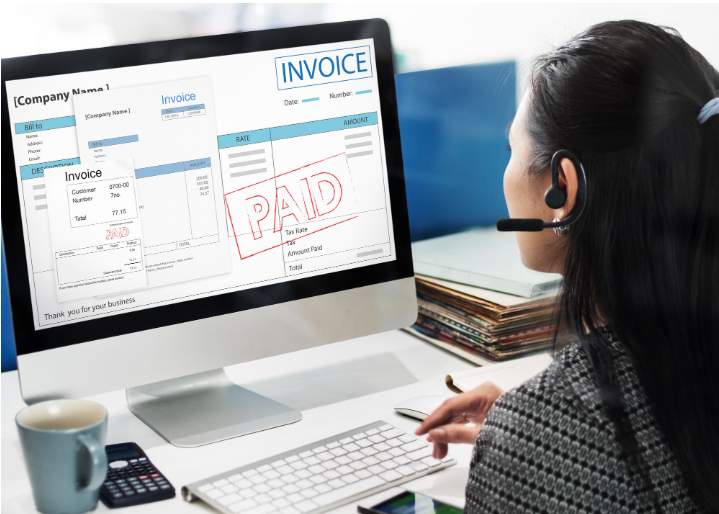Your invoicing process may seem simple on the surface: send an invoice, wait for payment, and repeat. But over time, small mistakes or inefficient habits can quietly chip away at your bottom line. If your business runs on delayed payments or missed follow-ups, the problem might not be your clients—it could be your process.
A quarterly review of your invoicing system can help you to uncover where money, time, or effort is being lost. Whether you’re managing finances solo or you’re working with a small team, this check-in can lead to better cash flow and stronger client relationships.
Why Invoicing Needs Regular Review
Invoicing isn’t just an admin task; it’s directly tied to your revenue. When your process isn’t running smoothly, it can delay payments, increase errors, and complicate your accounting records. Doing a review every quarter helps you catch minor issues before they become costly.
This check-in doesn’t need to be complex. You’re simply looking for patterns, bottlenecks, and blind spots that may be hurting your efficiency or profitability.
Common Signs Your Invoicing Process Is Costing You
Even if you’ve been using the same system for years, that doesn’t mean it’s still effective. Consider the following red flags:
- You frequently follow up on late or missing payments.
- Your invoices contain errors or inconsistent formatting.
- Clients often ask for clarification before paying.
- You’re not tracking which invoices are overdue.
- You forget to invoice for small projects or add-ons.
Individually, these may seem small. But combined over a quarter or a year, they can lead to significant revenue loss.
Step 1: Review Your Invoice Templates
Start by examining the structure and content of your invoices. Are they clear, consistent, and professional? If your invoice layout varies from one client to the next, it could be causing confusion or payment delays.
Make sure every invoice includes these basic elements:
- Your business name and contact information
- Client details
- Invoice number and date
- Itemized list of services or products
- Subtotal, taxes, and total amount due
- Payment due date and method
If your current format feels clunky or outdated, try using a simple invoice template to streamline the layout and ensure consistency across all your client interactions.
Step 2: Evaluate Payment Terms and Clarity
Next, take a look at how well you communicate payment expectations. If your terms are unclear or buried in small print, it can lead to misunderstandings and late payments.
Use plain language to outline:
- When payment is due (e.g., net 15, net 30)
- Accepted payment methods
- Any late fee policies
- Contact info for billing questions
Review whether these details are consistent on every invoice. Clients appreciate transparency, and you will benefit from quicker responses and fewer follow-ups.
Step 3: Track Time and Billable Hours Accurately
If you bill for time-based services, inaccurate time tracking can directly reduce your earnings. Are you logging hours as you go, or are you relying on memory later? Even small gaps in tracking can result in lost billable time.
Consider using a digital system or a spreadsheet that helps you log hours in real time. If you’re unsure how to invoice those hours, this guide on how to create an invoice can walk you through formatting, descriptions, and calculation tips.
Step 4: Audit Past Invoices for Trends
Now’s the time to pull up your sent invoices from the last quarter. Look for patterns that could indicate trouble spots or areas of improvement.
Don’t just rely on instinct. Run the numbers instead. Compare how much time you spend on invoicing against the actual results. Are you still chasing down old payments weeks after projects close? Are you manually entering the same details over and over? If so, your current process may be costing you in lost productivity. Small inefficiencies add up over time, especially if you’re managing multiple clients or projects at once.
Even if you’re getting paid eventually, slow invoicing can strain your cash flow and distract you from other tasks that grow your business. That’s why this quarterly check-in matters.
Questions to ask during your audit:
- How many invoices were sent on time?
- How long did it take clients to pay, on average?
- Were any projects left unbilled?
- How often did you have to send payment reminders?
- Did any clients dispute charges or need clarification?
This review helps you quantify what’s working and what’s not, so you can adjust your process accordingly.
Step 5: Check In With Clients
Invoicing isn’t a one-sided system. The experience should work for both you and your clients. If you’ve had frequent delays or questions from a particular customer, reach out to ask for feedback.
You don’t need a formal survey. A quick email or a short conversation can uncover insights about what clients expect when reviewing your invoices. Often, a small tweak in language or formatting can make a big difference in how quickly they pay.
Make It a Quarterly Habit
Your invoicing process doesn’t need a full overhaul every three months, but regular check-ins keep it strong. Set a recurring calendar reminder to review your invoices, payment timelines, and overall system. Just an hour each quarter can prevent errors, improve cash flow, and keep client relationships on solid ground.
Invoicing may feel routine, but it deserves regular attention. When done well, it reinforces your professionalism, streamlines your finances, and ensures your business gets paid on time, every single time.



